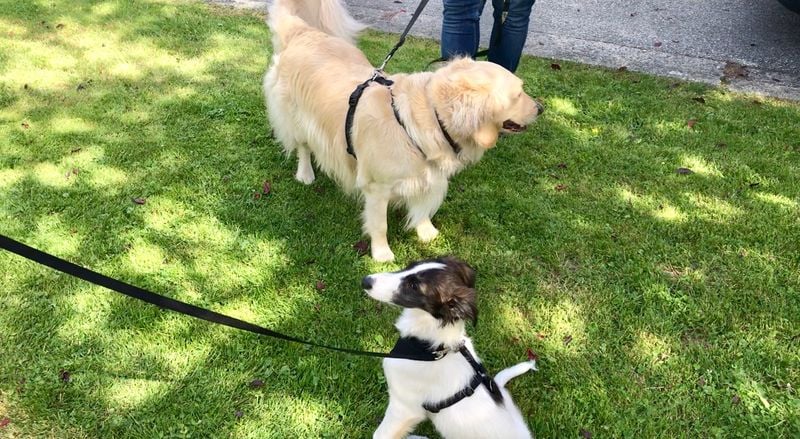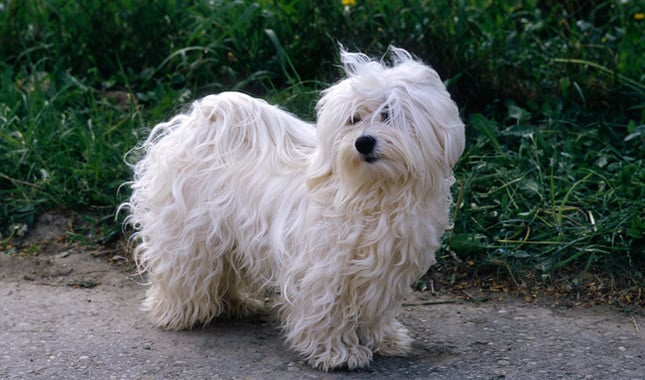10 Mistakes to Avoid When Helping Your Dog Meet Other Animals
Introducing your dog to new animal companions can be one of the most rewarding—or stressful—parts of pet parenthood.
Whether it’s a new pup at the park, the neighbor’s curious cat, or a soon-to-be sibling in the household, these first interactions can set the tone for future relationships.
And as any experienced dog owner will tell you, it’s not always as simple as a sniff and a wag. We often imagine our dogs joyfully frolicking with other animals like characters in a Disney movie.
But real life? It’s messier. One wrong move, a rushed greeting, or even a misread tail wag can lead to confusion, stress, or even a full-blown scuffle.
The truth is, even the friendliest dog can feel overwhelmed, protective, or unsure when a new creature enters their space. That’s where we come in.
While dogs are incredibly intuitive, they also rely on us to guide them through unfamiliar situations—especially when it comes to making new friends.
Unfortunately, well-meaning dog owners often make common mistakes that unintentionally increase anxiety or create negative associations.
The good news? Most of these blunders are completely avoidable once you know what to watch for.
With a little patience, the right setting, and some canine communication know-how, you can set your dog up for success and foster positive, safe interactions that lead to real companionship.
In this article, we’re walking you through ten mistakes to avoid when helping your dog meet other animals.
Whether you’re introducing a new pet at home or just trying to avoid awkward encounters at the dog park, these tips will help you navigate the process with confidence—and keep tails wagging all around.
1. Skipping the Introduction Phase
Jumping straight into a face-to-face meeting can overwhelm your dog. Skipping gradual introductions—like scent exchanges or visual contact from a distance—can lead to fear-based reactions or territorial behavior.
Your dog needs time to adjust to new scents and sights, making the gradual introduction phase vital.
Without these steps, a dog might feel threatened or anxious, leading to undesirable behaviors. Creating a calm environment where both animals can adjust at their pace is essential.
Slowly building familiarity helps reduce stress and promotes a peaceful meeting. As they get used to each other’s presence, your dog is more likely to have a positive experience.
2. Using a Tight Leash
A taut leash increases tension, both physically and emotionally. Dogs often mirror our stress, so a tight grip can communicate anxiety and trigger defensive or aggressive behavior during greetings.
Loosening the leash can have a more calming effect on your pet.
The freedom of movement allows your dog to express natural behaviors, reducing the risk of negative reactions. A relaxed leash encourages curiosity and confidence.
Being mindful of how you hold the leash helps create a more welcoming atmosphere for introductions. It’s a simple change that can make a big difference in meeting new friends.
3. Letting Dogs Rush Each Other
Allowing off-leash sprints toward another animal can be perceived as threatening.
Controlled approaches help maintain calm energy and prevent misunderstandings that could escalate. Quick movements can be overwhelming and trigger defensive responses.
Taking it slow and steady lets both animals feel secure. Instead of rushing, guide them with gentle words and treats.
This measured approach ensures a positive interaction, reducing the chances of a negative encounter. With patience, your dog learns to approach others with confidence and respect, setting the stage for successful socialization.
4. Ignoring Body Language
Overlooking subtle cues like lip licking, yawning, or tail position can result in missed warning signs. Recognizing early signs of discomfort lets you intervene before conflict arises.
Dogs communicate through body language, and understanding these signals is key.
Watch for changes in posture or facial expressions, as they can reveal a lot about your dog’s feelings. Intervening early can prevent unwanted situations, keeping encounters calm and friendly.
Learning to read your dog’s body language strengthens your bond and ensures smoother meetings with other animals. It’s communication at its finest!
5. Introducing in a Confined Space
Small, enclosed areas don’t allow animals to create space or escape if needed. Always choose a neutral, open area that minimizes resource guarding and offers multiple exit paths. Confined spaces can lead to tension and territorial behavior.
Open environments provide freedom for dogs to explore and retreat if they feel uneasy. It’s essential to allow them the choice to engage or avoid.
Neutral settings foster a sense of calm and safety in both animals. This thoughtful choice of meeting place lays the groundwork for a positive interaction, enabling both parties to relax and get acquainted at their own pace.
6. Not Knowing the Other Animal’s Temperament
Assuming the other animal is friendly can be a major misstep. Take time to learn about the other pet’s history, triggers, and behavior to avoid pairing incompatible temperaments.
Understanding these factors helps in planning a successful introduction.
Each animal is unique, and knowing their personality traits aids in anticipating possible challenges.
This preparation allows for smoother meetings by addressing potential issues beforehand. Knowledge is power, and being informed ensures a safer environment for both your dog and their new friend.
7. Punishing Growls or Warnings
Correcting your dog for growling teaches them to suppress warning signs. Instead, treat these as useful indicators of discomfort and address the root cause calmly and supportively.
Understanding why your dog growls is more productive than punishment.
These vocal signals can prevent escalation if acknowledged and managed appropriately. It’s a window into their world, showing you what needs attention.
Encouraging honest communication builds trust and respect between you and your dog. It’s about listening and responding with empathy, not fear.
8. Rushing the Process
Expecting instant friendships sets everyone up for failure. Take your time—some dogs may need several short, positive interactions before they feel safe and relaxed around new companions. Patience is key in building lasting bonds.
Allowing your dog to adjust at their own pace encourages trust and comfort. Each interaction builds upon the last, slowly forming a connection.
Remember, quality over quantity in these meetings fosters a more meaningful relationship. By letting things develop naturally, you set the stage for successful socialization in the long run.
9. Forgetting to Reward Good Behavior
Failing to reinforce calm, polite interactions is a missed opportunity. Use treats and praise to build positive associations and encourage repeat behavior during future encounters. Positive reinforcement is a pillar of effective training.
Celebrate successes, no matter how small, to boost your dog’s confidence. This approach creates an eager learner who’s happy to engage.
Through rewards, you shape a dog’s social skills, promoting a lifetime of friendly interactions. It’s about creating joy and enthusiasm in every meeting, making each encounter something to look forward to.
10. Assuming All Dogs Want Friends
Not every dog is socially inclined. Forcing interactions on a shy or reactive pup can damage their confidence. Respect your dog’s boundaries and focus on progress, not perfection. Evaluating your dog’s readiness is crucial.
Some might prefer quiet companionship or need space away from others. Understanding these preferences prevents stress and builds trust.
By valuing your dog’s individuality, you nurture a happier, more secure pet. It’s about celebrating who they are, not forcing them into uncomfortable situations.















